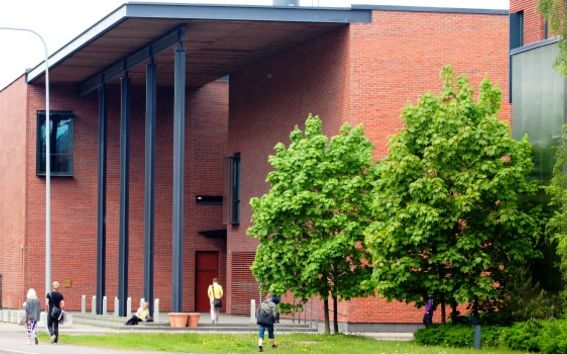Defence in the field of computer science, Polina Rozenshtein, M.Sc.(Tech.)

When
Where
Event language(s)
Polina Rozenshtein, M.Sc.(Tech.), will defend the dissertation "Methods for analyzing temporal networks" on Friday 9 November 2018 at 13 at Aalto University School of Science, lecture hall AS1, Maarintie 8, Espoo.
Networks or graphs are fundamental models, used to represent and analyze structural dependencies in a system of objects. Common examples of graph models come from social networks, road systems, electric power grids, the Internet, the web, and chemical and biological systems. The real-world data naturally has a temporal component: phone calls are associated with a start time and duration, interactions in online social networks have timestamps, traffic sensors produce time-series data, etc. To get the most out of the available data it is important to represent the data with minimal loss of information. A fine-grained modeling enables comprehensive analysis and helps revealing structural and temporal patterns, hidden otherwise. Thus, we focus on studying temporal networks, i.e., networks with a temporal component. Our model consists of networks with detailed information about the interaction between nodes: the exact timestamp of each interaction, the duration of the interaction, and possibly the interaction type.
While network analysis is a well-studied topic, analysis of temporal networks is a less explored area. This thesis studies different aspects of temporal networks: centrality measures, spread of infections, event detection, and network summarization. The first thesis contribution is a novel generalization of a popular node-importance measure, which captures changes of the importance of nodes due to changes in their behavior. This measure can be used, for example, to monitor influential people in social networks. In another work, we develop methods to reconstruct the infection spread of the network by leveraging partial and noisy information, without any assumptions on the infection propagation model. Our work has applications in epidemiology as well as in viral marketing. Furthermore, we study two novel event-detection problems: detecting topically- and temporally-coherent interactions in social networks, and detecting nearby nodes with high values of activity indicators. The latter formulation can be applied to discover heated discussions on Twitter or events in city traffic data. Last, we develop novel methods to obtain two types of concise summaries of temporal network activity. Such summaries can give quick insights from large complex networks.
Electronic dissertation: http://urn.fi/URN:ISBN:978-952-60-8217-2
Opponent: Assistant Professor Leman Akoglu, Carnegie Mellon University, H. John Heinz III College, US
Custos: Professor Aristides Gionis, Aalto University School of Science, Department of Computer Science






